What is Photogrammetry?
The classical definition of Photogrammetry is the process of deriving metric information about an object through measurement made on the photograph of the object. Photogrammetry is the science of making measurements from photographs. Photogrammetry means the measuring of features on a photograph.
This is concerned about metric or measurement aspect of the process. In addition to this photo interpretation aspect is also involved while the technology is used for mapping where feature collection is required.
The fundamental task of metric information is derived through establishing the geometric relationship between the image and the object as it existed at the time of the imaging. Once this is established other information of the object are derived.
Photogrammetry describes from three words:
‘photo’ – light
‘gram’ – drawing
‘metry’ – measurement
The output of photogrammetry is typically a map, drawing, measurement, or a 3D model of some real-world object or scene. Many of the maps we use today are created with photogrammetry and photographs taken from aircraft.

Fundamental principle of Photogrammetry
The fundamental principle used by photogrammetry is triangulation. By taking photographs from at least two different locations, so-called “lines of sight” can be developed from each camera to points on the object. These lines of sight (sometimes called rays owing to their optical nature) are mathematically intersected to produce the 3-dimensional coordinates of the points of interest. Triangulation is also the principle used by theodolites for coordinate measurement. If you are familiar with these instruments, you will find many similarities (and some differences) between photogrammetry and theodolites. Even closer to home, triangulation is also the way your two eyes work together to gauge distance (called depth perception).
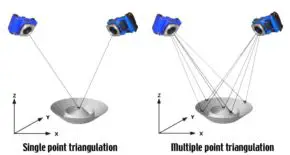
Branch of Photogrammetry
Photogrammetry can be classified based on camera location during photography. On this basis we have Aerial Photogrammetry, Terrestial Photogrammetry and Space Photogrammetry.
1. Aerial Photogrammetry: The camera is mounted in an aircraft and is usually pointed vertically towards the ground. Aerial photographs are taken from the air by special camera mounted in an aircraft flying over the area with the camera axis vertical or nearly so. Multiple overlapping photos of the ground are taken as the aircraft flies along a flight path. These photos are processed in a stereo-plotter (an instrument that lets an operator see two photos at once in a stereo view). These photos are also used in automated processing for Digital Elevation Model (DEM) creation.

Aerial Photogrammetry
2. Terrestial Photogrammetry: is that branch of photogrammetry where photographs are taken from a fixed, and usually known, position on or near the ground and with the camera axis horizontal or nearly so. The position and orientation of the camera are often measured directly at the time of exposure. The instrument used for exposing such photograph is called photo theodolite.

Terrestial Photogrammetry
3. Space Photogrammetry: The space photogrammetry embraces all aspects of extraterrestrial photography and subsequent measurement wherein the camera may be fixed on earth, contained in an artificial satellite, or positioned on the moon or a planet.
The term photo interpretation is applied to that branch of photogrammetry wherein aerial or terrestrial photographs are used to evaluate, analyze, classify, and interpret images of objects which can be seen on the photographs. Consequently, photogrammetry must be considered as a combination of measurement and interpretation.
Types of Photogrammetry
There are two types of photogrammetry as follows:
- Interpretative Photogrammetry.
- Metric Photogrammetry.
- Planimetric mapping.
- Topographical mapping.
Interpretative Photogrammetry
Interpretative photogrammetry involves recognizing and identifying objects and judging their significance through careful and systematic analysis from photographic images.
- These images created from satellite imagery which senses energy in wavelengths
- Forms basis for remote sensing (art or science of gathering information about an object or image without actually coming into physical contact).
- Photo interpretation involves in the study of photographic images, while remote sensing involves not only the analysis of photography but also the use of data collected from remote sensing instruments.
Metric Photogrammetry
It consists of making precise measurements on photographs and other information to determine relative locations of points.
- Common application of Metric Photogrammetry consists of planimetric mapping and topographical mapping.
- Applications used to determine distances, elevations, areas, volumes, and cross-sections to compile topographical maps from photographic measurements
- The photographs used for this purpose are mostly aerial photographs, but terrestrial photographs also used sometimes.
Classification of Aerial Photographs
Aerial photographs which are normally used for mapping and photo interpretation can be classified in to two main categories viz. vertical and tilted.
Vertical Photograph:
An aerial photograph taken with the optical axis of the camera held in a vertical or nearly vertical position is classified as vertical photograph. When the geometry of a vertical photograph is considered, the photograph is assumed to be taken with the optical axis truly vertical.
Tilted Photograph:
In practice, the camera axis is nearly held vertical. But due to unavoidable aircraft tilts the camera axis is unintentionally tilted from the vertical. Then the resulting photograph is called tilted photograph.
If tilt of the camera axis from the plumb line is less than 3 degree the photograph is called vertical. For tilt more than 3 degree, it is called tilted photograph. Tilted photograph may again be classified in two categorizes viz. low oblique and high oblique.
Oblique photograph: An oblique photograph in which the apparent horizon appears is termed as high oblique photograph. Apparent horizon: it is the line in which the earth appears to meet the sky as visible from a point.
Low oblique photograph: is one on which the apparent horizon does not appear. A pair of low oblique taken in sequence along a flight direction in such a manner that both photographs cover basically the same area is called convergent photographs.
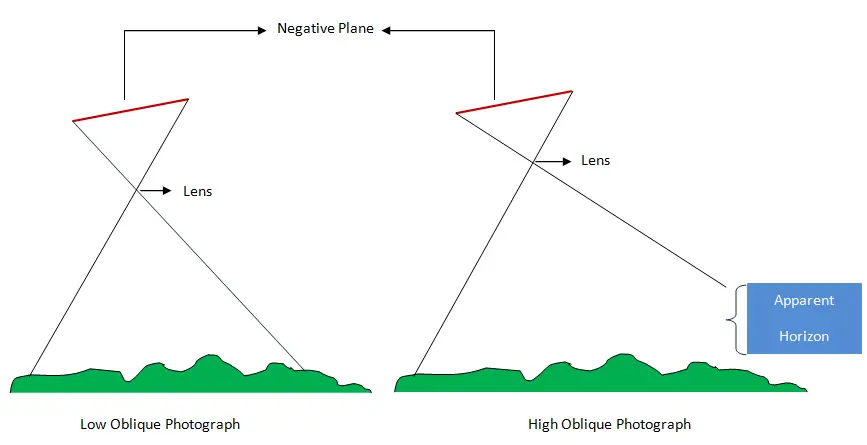
Photographs may also be classified with respect to angular field of view of aerial camera as normal angle, wide angle and super (ultra) wide angle photograph.

When an area is covered by vertical photography, the photographs are usually taken by a series of a parallel passes called flight strip/run. Photographs are normally exposed in such a way that the area covered by each successive photograph along a flight strip duplicates or overlaps part of the coverage of previous photograph.
This lapping along the flight strip is called end lap and the area of coverage common between two adjacent pair of photographs called in a flight strip is called stereoscopic overlap (end lap). The amount of end lap is normally from 55% to 65%.
The pair of photograph is called stereo pair. The positions of camera at each exposure e.g. 1, 2, 3…are called the exposure stations and the altitude of camera at the instant of exposure is called flying height.
Adjacent flight strips are photographed so that there is also a common coverage which is called lateral overlap or side lap and is normally held from 25% to 30%. The photographs of two or more side lapping strips used to cover an area is called block of photographs.
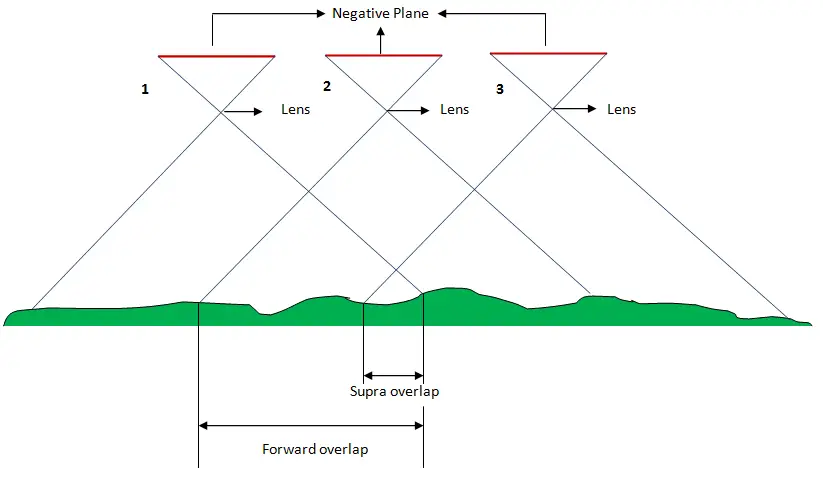
Requirements of Photogrammetry Technology
i) Overlapping image for stereo view required for 3D vewing and measurement.
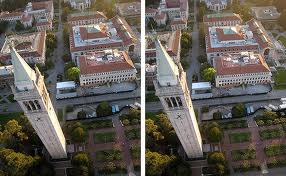
Stereo Pair Photograph
ii) Ground Control Points (XYZ) for establizing positional relationship between photo and ground.
Advantagesof Photogrammetry
- Cover areas quickly.
- Low costs.
- Easy to obtain/access information from air.
- Illustrates great detail.
Applications of Photogrammetry
- To prepare planimetric topographical maps (Surveying/mapping).
- To determine the space position of ground objects.
- For acquisition of military intelligence (Military/artificial intelligence).
- To classify soil (Forestry/agriculture).
- For the interpretation of geology (Geology/archaeology).
- Assessment of crop damage due to floods or other natural calamities.
- To prepare a composite picture of ground.
- To relocate existing property boundaries.
- In the field of medicine.
Author:

Nisha Upadhyay
Author and Admin @ GIS Resources,
&
Senior Research Fellow,
Division of Agricultural Physics,
Indian Agricultural Research Institute,
New Delhi – India
Reach her:
Email: nishakkupadhyay@hotmail.com
Linkedin: in.linkedin.com/pub/nisha-upadhyay/57/6a9/183
About Author
GIS Resources
GIS Resources is an initiative of Spatial Media and Services Enterprises with the purpose that everyone can enrich their knowledge and develop competitiveness. GIS Resources is a global platform, for latest and high-quality information source for the geospatial industry, brings you the latest insights into the developments in geospatial science and technology.
Comments
Write a Comment
This site uses Akismet to reduce spam. Learn how your comment data is processed.




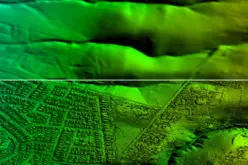

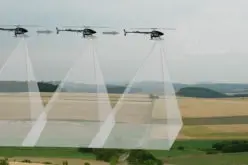




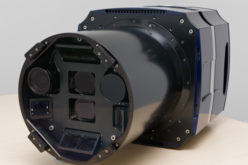

Excellent thanks
Nice Work
Very good
info: http://www.ilyadaharita.com.tr
Thank you for sharing this.
Excellent nisha mam tq
i am so happy for this
mam
Thanks for the valuable information about photogrammetry.
Thank you so much . Helpful for learning basics
Nice one but need comple notes on photogrammetry